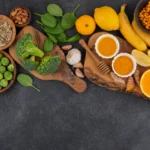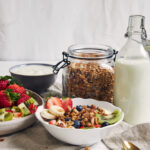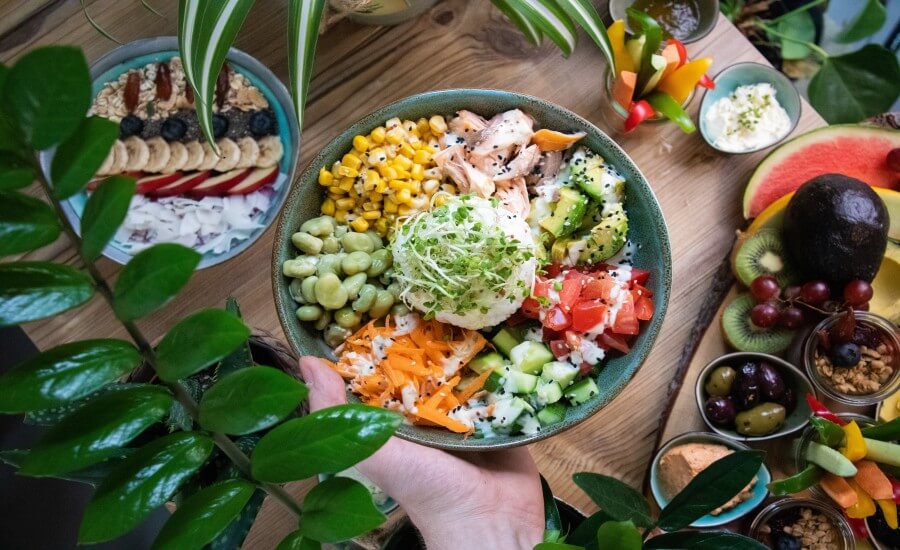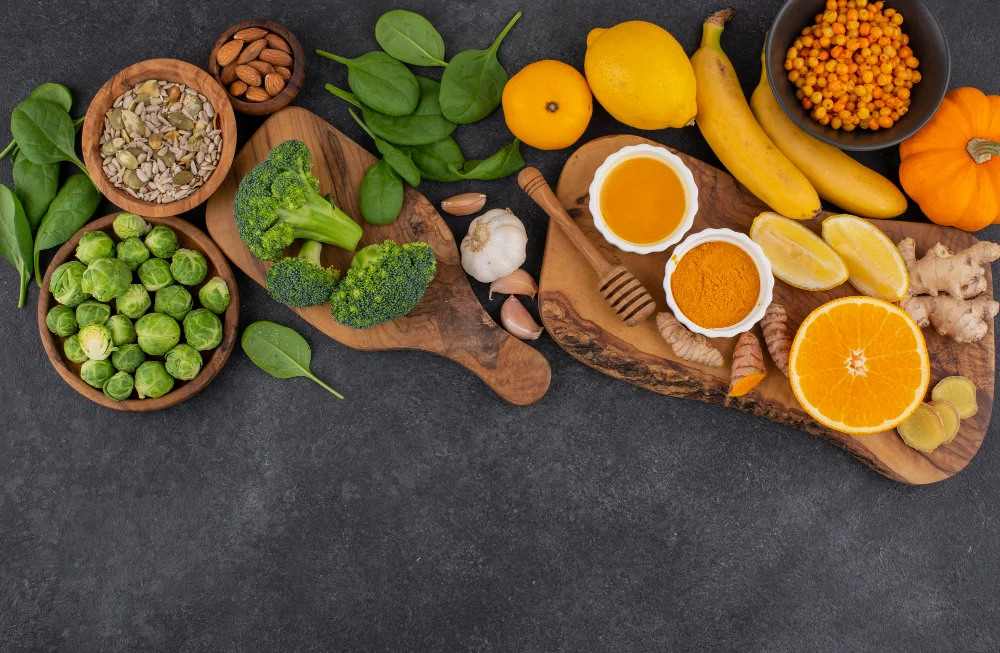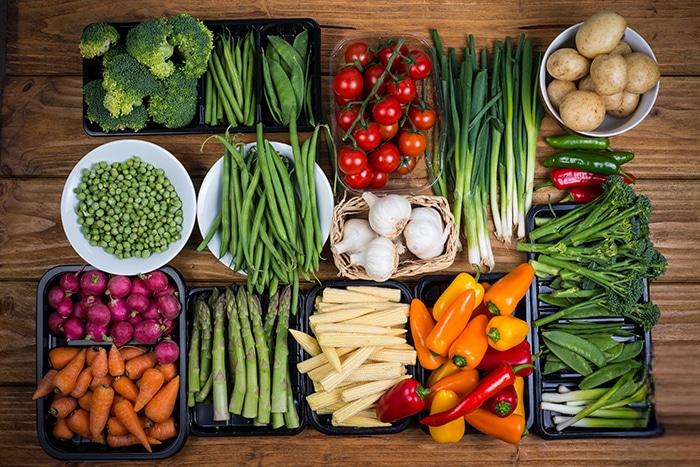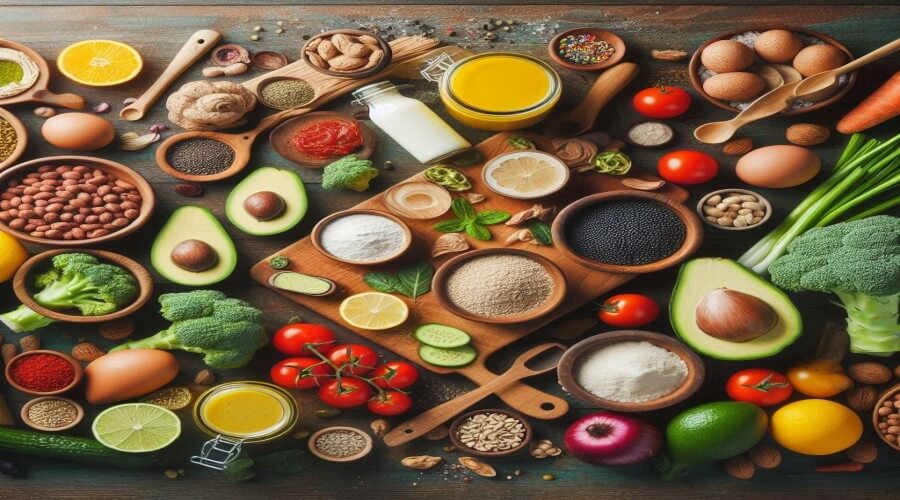Salads often get stereotyped as uninspired side dishes or restrictive diet food. But it’s time to toss that notion aside! A well-crafted salad can be a vibrant, satisfying, and incredibly flavorful main meal, particularly suited to a vegan lifestyle and adaptable to diverse climates, including the warmth of Jaipur. This guide explores fresh and flavorful vegan salad ideas that go far beyond basic lettuce and tomato. We’ll delve into building nutritionally balanced bowls, making conscious ethical choices, considering environmental impacts, and mastering practical techniques and recipes that celebrate the best of plant-based ingredients, using seasonal inspiration from Rajasthan and beyond.
Fresh & Flavorful: Delightful Vegan Salad Ideas to Try
LENS 1: Nutritional Analysis (Beyond the Lettuce Leaf)

A truly satisfying vegan salad is a nutritional powerhouse, carefully constructed to provide sustained energy, essential nutrients, and satiety.
- The Anatomy of a Great Salad:
- Base Camp: Move beyond just iceberg lettuce! Use robust greens like spinach (palak), romaine, arugula, massaged kale, or local greens like amaranth leaves (chaulai – when available). Non-leafy bases like shredded cabbage, cooked & cooled quinoa, millets (bajra, jowar), lentils, or chickpeas (chana) also create substantial salads.
- Protein Priority: Essential for making a salad a filling meal. Include generous amounts of:
- Legumes: Cooked chickpeas, kidney beans (rajma), black-eyed peas (lobia), lentils (whole masoor, moong), sprouts (moong, moth – popular in India).
- Soy: Baked/pan-fried/air-fried tofu cubes, crumbled tempeh, edamame.
- Nuts & Seeds: Almonds (badam), walnuts (akhrot), peanuts (moongphali), pumpkin seeds (kaddu ke beej), sunflower seeds (surajmukhi ke beej), sesame seeds (til), hemp seeds.
- Rainbow Veggies & Fruits: Pack in variety for vitamins, minerals, and antioxidants. Use what’s seasonal in Jaipur (May/hot season: cucumber/kheera, tomatoes/tamatar, onions/pyaz, bell peppers/shimla mirch, carrots/gajar). Add raw mango (kairi) for tang, or pomegranate seeds (anar) for sweetness/crunch when in season (usually winter).
- Healthy Fats: Crucial for satiety and absorbing fat-soluble vitamins (A, D, E, K). Include avocado slices, olives, nuts/seeds, or dressings made with tahini, nut butters, or quality plant oils (olive, sesame, groundnut).
- Complex Carbs (Optional but Recommended for Main Meals): Add substance with cooked and cooled whole grains (quinoa, millets, brown rice) or roasted root vegetables (potato, sweet potato cubes).
- Flavor Accents: Dressings, fresh herbs (coriander/dhania, mint/pudina are key in Indian salads), spices (chaat masala, roasted cumin powder/bhuna jeera), nutritional yeast, pickles (achar), or chutneys.
- Nutritional Punch: Balanced vegan salads deliver high fiber, diverse vitamins & minerals, antioxidants, plant protein, and healthy fats, contributing to gut health, stable energy, and overall well-being. The high water content of fresh produce also aids hydration, vital in Jaipur’s heat. Remember your B12 supplement for overall vegan health! How can you strategically combine protein, healthy fats, and fiber to make your salads more satisfying and filling?
Read more: Easy Homemade Vegan Salad Dressings: Healthy & Tasty
Nutritional Deep Dive: Building a Main-Meal Salad
To transform a salad from a side to a satisfying main course, ensure adequate Protein, Fiber, and Healthy Fats.
- Protein Target: Aim for at least 15-20g of protein per main meal salad. Achieve this with ~1 cup of cooked beans/lentils/chickpeas, ~100-150g tofu/tempeh, or a generous combination of nuts, seeds, and protein-rich grains like quinoa.
- Fiber Focus: Maximize fiber with leafy greens, plenty of non-starchy vegetables, legumes, whole grains, nuts, and seeds. Fiber adds bulk and slows digestion.
- Fat for Fullness: Don’t fear fat! Incorporate avocado, nuts, seeds, or an oil/tahini/nut-based dressing (approx. 1-2 tbsp) to significantly increase satiety and make the meal last longer.
Voice of Experience (Plant-Based Dietitian): “Forget sad desk salads! A truly nourishing vegan salad should be a vibrant composition. Build it on a base of greens or grains, add a substantial protein source like chickpeas or baked tofu, pile on colourful seasonal vegetables, include healthy fats via avocado or a seed-based dressing, and finish with flavourful herbs and spices. That’s a meal!” – Dr. Priya Agarwal, RDN
LENS 2: Ethical Framework (Conscious Crunch)

Creating and enjoying vegan salads provides opportunities to align meal choices with ethical values beyond just avoiding animal products.
- Celebrating Plant Life: Salads are a direct celebration of plant diversity and abundance. Choosing vegan inherently rejects the ethical costs of animal agriculture.
- Ethical Sourcing: Make conscious choices about where ingredients come from:
- Local & Seasonal: Buying produce from local Jaipur markets supports Rajasthani farmers directly, fosters community ties, and reduces reliance on potentially exploitative long-distance supply chains.
- Fair Trade: Opt for Fair Trade certified nuts, seeds, quinoa, olive oil, spices, or coffee (for dressings?) when possible.
- Organic: Choosing organic produce supports farming methods that minimize harmful pesticide use, benefiting farmworkers and ecosystems.
- Minimizing Food Waste: Salads are excellent vehicles for using up leftover cooked grains, roasted vegetables, small amounts of beans, or slightly wilting greens and herbs. Use vegetable scraps like broccoli stems (shredded) or herb stems (blended into dressings). This respects the resources used to grow the food.
- Nourishment, Not Punishment: Challenge the diet-culture association of salads with restriction. Frame vibrant, filling vegan salads as acts of self-care and nourishment, enjoyed for pleasure and well-being, aligning with body positivity ethics.
- Sharing Joyful Food: A beautiful, flavourful vegan salad can be a wonderful dish to share, showcasing how appealing, fresh, and satisfying compassionate eating can be. How does choosing local, seasonal ingredients for your salad contribute to your sense of ethical eating?
Hidden Benefits: Vibrancy & Connection
Eating fresh, colourful, plant-rich salads often leads to subjective feelings of increased energy and vibrancy. Furthermore, sourcing locally can create a tangible connection to the land and the community that produced the food.
Voice of Experience (Local Food Advocate, Jaipur): “Building your salad around what’s fresh at the local mandi is an ethical act. You support our farmers, reduce waste, eat food that hasn’t travelled miles, and reconnect with Rajasthan’s natural growing seasons. A simple kachumber salad with local kheera, tamatar, pyaz is ethical eating in action.” – Ramesh Choudhary, Organic Farmer Network
Critical Reassessment: The “Superfood” Trap
While enjoying diverse ingredients is great, be mindful of the ethical and accessibility implications of relying heavily on expensive, imported “superfood” toppings often promoted online (goji berries, exotic seeds). Focus on building delicious, ethical salads primarily from accessible, affordable, local, and seasonal staples.
LENS 3: Ingredient Science & Environment (Sustainable Greens)
Understanding ingredient properties and their environmental context helps build better, more sustainable salads.
- Salad Science:
- Crispness: Fresh vegetables maintain crispness due to turgor pressure (water within cells). Proper storage (e.g., greens in breathable bags with slight moisture) helps maintain this. Dressing salads just before serving prevents wilting.
- Dressings (Emulsions): Vinaigrettes are temporary emulsions of oil and acid (vinegar, lemon juice). Adding an emulsifier like mustard, tahini, or blended cashews creates more stable, creamy dressings by helping oil and water mix.
- Flavor Pairing: Balancing tastes (sweet, sour, salty, bitter, umami) and textures (crunchy, creamy, chewy, crisp) makes salads more satisfying.
- Environmental Impact:
- Low Footprint Meal: Salads centered on plants (vegetables, legumes, grains, nuts, seeds) have a vastly lower environmental footprint (GHG emissions, land use, water use) than salads containing grilled chicken, cheese, or beef.
- Seasonality & Food Miles: Choosing local, seasonal produce significantly reduces transportation emissions. Using tomatoes, cucumbers, and onions readily available in Jaipur now is far more sustainable than using imported asparagus or berries. Winter salads would feature local carrots, radish, spinach, etc.
- Base Choices: Local millets (bajra, jowar) generally have a much lower water footprint than conventionally grown rice, making them a sustainable base for grain salads in Rajasthan. Quinoa’s footprint includes significant transport miles for most consumers.
- Packaging Waste: Buying loose vegetables/greens and making dressings from scratch minimizes plastic packaging compared to bagged salads and bottled dressings. How can you adapt your favorite salad recipe to use vegetables that are currently in season locally?
Market Transformation Map Suggestion: Data showing the growth in consumer demand for local/organic produce through farmers’ markets or Community Supported Agriculture (CSA)/vegetable box schemes in urban and peri-urban India.
Voice of Experience (Environmental Scientist): “Plant-based salads, especially those utilizing local and seasonal ingredients, represent a very low-impact meal choice. Shifting towards salads based on legumes and regionally appropriate grains like millets, instead of meat or imported goods, significantly reduces pressure on water resources, land, and lowers greenhouse gas emissions.” – Dr. Priya Singh, Climate & Food Systems Researcher
LENS 4: Everyday Practitioner’s Experience (Recipes, Tips & Assembly)

Let’s translate theory into delicious reality with practical tips and creative vegan salad ideas, suited for Jaipur and beyond.
Building Blocks & Techniques:
- Beyond Lettuce: Explore bases like shredded cabbage, massaged kale (rub with oil/lemon juice to soften), spiralized zucchini/carrot, cooked & cooled quinoa, millets (bajra/jowar), lentils, or chickpeas.
- Protein Prep: Bake or pan-fry marinated tofu cubes until golden, roast chickpeas with spices until slightly crisp, cook lentils/beans from scratch (pressure cooker is fast) or use canned, sprout moong/moth beans at home (very common and affordable in India).
- Veggie Versatility: Chop, slice, grate, shred, or spiralize raw veggies. Roasting vegetables (like cauliflower, sweet potato, peppers) adds depth and sweetness. Steaming works for broccoli or green beans.
- Dressings Demystified:
- Simple Vinaigrette Formula: 3 parts Oil (olive, groundnut) + 1 part Acid (lemon juice, vinegar) + Salt + Pepper + Optional: Dijon mustard (emulsifier), sweetener (maple/jaggery), minced garlic/herbs. Shake well in a jar!
- Creamy Tahini Dressing: Tahini + Lemon Juice + Water (to thin) + Garlic + Salt.
- Cashew Cream Dressing: Blended soaked cashews + Water/Plant Milk + Lemon Juice/Vinegar + Nutritional Yeast (optional) + Salt.
- Indian Inspired: Use vegan yogurt + mint/coriander + spices (chaat masala, cumin); or a base of tamarind pulp + jaggery + spices; or simply lemon juice + salt + roasted cumin powder + chili powder (common on kachumber).
- Texture & Flavour Boosters: Add crunch with toasted nuts/seeds (peanuts, pumpkin seeds, sesame seeds are great budget options), roasted chickpeas, or even crispy sev/bhujia (use sparingly/mindfully). Add chewiness with dried fruit (raisins, dates). Add freshness with generous amounts of herbs (coriander and mint are essential in many Indian salads). Add umami/cheesy notes with nutritional yeast or small bits of tangy achar (pickle).
Fresh & Flavorful Vegan Salad Ideas (Adapt Seasonally):
- Jaipur Kachumber Salad Bowl (Summer): Base of chopped cucumber, tomato, onion. Add boiled Kala Chana (black chickpeas) or white Chana. Top with roasted peanuts or sev. Dressing: Lemon juice, salt, black salt (kala namak), roasted cumin powder (bhuna jeera), chaat masala, fresh coriander. (Simple, refreshing, uses local staples).
- Sprouted Moong Salad (Year-round): Sprouted moong beans + finely chopped onion, tomato, cucumber + grated carrot + pomegranate seeds (seasonal – winter) + Dressing: Lemon juice, salt, chaat masala, green chili (optional), fresh coriander. (Highly nutritious, common Indian snack/salad).
- Mediterranean Chickpea & Quinoa Salad: Cooked quinoa + chickpeas + chopped cucumber, tomatoes, bell peppers, onions + olives (optional) + fresh parsley/mint + Dressing: Lemon-herb vinaigrette (olive oil, lemon juice, oregano, salt, pepper).
- Roasted Sweet Potato & Black Bean Salad (Cooler Weather): Mixed greens or massaged kale + roasted sweet potato cubes + black beans + corn + avocado + pumpkin seeds + Dressing: Creamy chipotle-lime dressing (cashew/tahini based).
- Creamy Broccoli Pasta Salad (Adaptable): Cooked pasta (whole wheat) + steamed/blanched broccoli florets + cherry tomatoes + red onion + Dressing: Creamy cashew or white bean based dressing with nutritional yeast, garlic, lemon juice.
What combination of base, protein, veggies, and dressing sounds most exciting for your next salad creation?
Daily Impact: The Salad Jar Meal Prep
Layer salad components in a large glass jar for easy transport and to prevent sogginess:
- Dressing at the bottom.
- Hard vegetables/beans/grains next.
- Softer vegetables/fruits.
- Protein (tofu, etc.).
- Leafy greens packed at the top.
- Nuts/seeds separate or on top. Shake well just before eating!
Voice of Experience (Health-Conscious Home Cook): “I used to think salads were boring until I started building them properly! Now, my lunches are often big vegan salads with quinoa, roasted chickpeas, tons of veggies from the market, toasted seeds for crunch, and a killer lemon-tahini dressing. It keeps me full for hours and feels so vibrant.” – Neha Sharma, Jaipur Resident
Alternative Approaches: Warm & Deconstructed Salads
- Warm Salads: Combine warm components (roasted vegetables, grains, sautéed tofu/mushrooms) with fresh greens and dressing for a comforting yet fresh meal, ideal for cooler weather.
- Deconstructed Salads: Arrange components separately on a plate instead of tossing, allowing individual flavours to shine – visually appealing and good for picky eaters.
PERSPECTIVE INTERSECTION MATRIX
- Nutrition & Variety (Lens 1 & 4): Building nutritionally complete salads (Lens 1) relies on the practical technique of combining diverse ingredients and textures (Lens 4).
- Ethics & Seasonality (Lens 2 & 4): Choosing seasonal, local produce (Lens 4) aligns with ethical goals of supporting local farmers and reducing environmental impact (Lens 2, 3).
- Environment & Base Choice (Lens 3 & 4): Opting for lower-impact bases like local millets or legumes (Lens 3) is a practical choice made during salad assembly (Lens 4).
- Science & Dressings (Lens 3 & 4): Understanding emulsion science (Lens 3) helps practitioners create stable, creamy homemade dressings (Lens 4) without dairy.
- Practicality & All Goals (Lens 4 & 1/2/3): The customizable, often quick-to-assemble nature of salads (Lens 4) makes them an ideal format for achieving nutritional goals (Lens 1), ethical sourcing/waste reduction (Lens 2), and sustainable ingredient choices (Lens 3).
MISCONCEPTION ANALYSIS
| Misconception | Reality |
| Salads are just boring lettuce, tomato, cucumber side dishes. | Salads can be incredibly diverse and exciting main meals! Think different bases (grains, legumes, cabbage), countless vegetable combinations, satisfying proteins, crunchy toppings, and flavourful global dressings. |
| Vegan salads are not filling and lack protein. | Easily made filling and protein-rich! Load up with chickpeas, beans, lentils, tofu, tempeh, edamame, nuts, seeds, and whole grains. Fiber and healthy fats in dressings also contribute significantly to satiety. |
| Making interesting vegan salad dressings is complicated or unhealthy. | Many delicious dressings are simple vinaigrettes requiring only oil, acid, and seasoning. Creamy dressings are easily made by blending nuts (cashews), seeds (tahini), beans, avocado, or vegan yogurt with herbs/spices – often very healthy. |
| Salads are only suitable for summer or weight loss. | Salads can be adapted for any season using seasonal produce (hearty root veg in winter) and can be built as calorie-dense, nourishing main meals, not just low-calorie diet food. Warm salads are great in cooler weather. |
| Fresh salad ingredients are hard to find or expensive, especially greens. | Focus on seasonal and local. Staples like cucumber, tomato, onion are usually affordable year-round in India. Utilize seasonal greens when available (spinach, methi, chaulai). Sprouted legumes are a very cheap, nutritious base/topping. |
KEY TURNING POINTS
- Rise of Salad Bars & Customization: Restaurants offering build-your-own salad options increased awareness of diverse ingredients and combinations.
- “Main Course Salad” Trend: Salads shifting from side dish to star of the meal on menus and in home cooking.
- Increased Availability of Diverse Greens: Wider access beyond iceberg lettuce to spinach, kale, arugula, mixed greens in supermarkets and markets.
- Plant-Based Protein Popularity: Tofu, tempeh, edamame, and creative uses for beans/lentils becoming common salad additions.
- “Buddha Bowl” / Grain Bowl Influence: Popularity of arranging components beautifully in a bowl, heavily influencing modern salad presentation and composition.
- Health & Wellness Focus: Emphasis on high vegetable intake and fresh ingredients positioning salads as a key healthy meal format.
SYNTHESIS & RECOMMENDATIONS
Reimagine the salad! Fresh and flavorful vegan salads are far from boring; they are vibrant, endlessly customizable canvases for creating satisfying and deeply nourishing meals. By combining a thoughtful base, substantial plant protein, a rainbow of seasonal vegetables (celebrating what’s available in Jaipur!), healthy fats for satiety, and exciting dressings and toppings, you can easily craft main-course salads that delight the palate and fuel your body. Embrace seasonal eating, source consciously, minimize waste, and enjoy the creative process of building your perfect plant-powered salad.
Recommendations for Flavorful Vegan Salads:
- Build a Balanced Foundation: Ensure your salad includes greens/veg, protein, healthy fats, and ideally complex carbs if it’s a main meal.
- Prioritize Protein & Fat for Satiety: Don’t skimp on legumes, tofu, nuts, seeds, avocado, or a good dressing to make your salad filling.
- Eat the Rainbow Seasonally: Incorporate a wide variety of colourful vegetables and fruits, focusing on what’s fresh and local (check your mandi!).
- Master Homemade Dressings: Learn a few simple vinaigrette and creamy dressing formulas – they elevate any salad and are healthier/cheaper than bottled.
- Think Texture: Add crunch (nuts, seeds, roasted chickpeas, raw veggies), creaminess (avocado, dressing), chewiness (dried fruit, grains, tofu).
- Prep Components: Cook grains/beans, roast veggies, chop raw veggies, and mix dressings ahead for quick weekday assembly.
- Don’t Dress Too Early: Add dressing just before serving to prevent wilting, unless using sturdy greens like kale that benefit from massaging.
- Get Creative! Mix and match ingredients, try global flavour profiles (Indian spiced chickpeas, Thai peanut dressing, Mediterranean olives/peppers), and use leftovers.
FURTHER AREAS OF EXPLORATION
- 10+ Healthy & Simple Vegan Salad Dressing Recipes
- Guide to Different Leafy Greens and How to Use Them in Salads
- Meal Prepping Salads: Strategies to Keep Them Fresh
- High-Protein Vegan Salad Toppings & Ideas
- Warm Vegan Salad Recipes for Cooler Weather
- Using Sprouts and Microgreens in Vegan Salads
- Creating Vegan Versions of Classic Salads (Caesar, Cobb, Nicoise adaptations)




